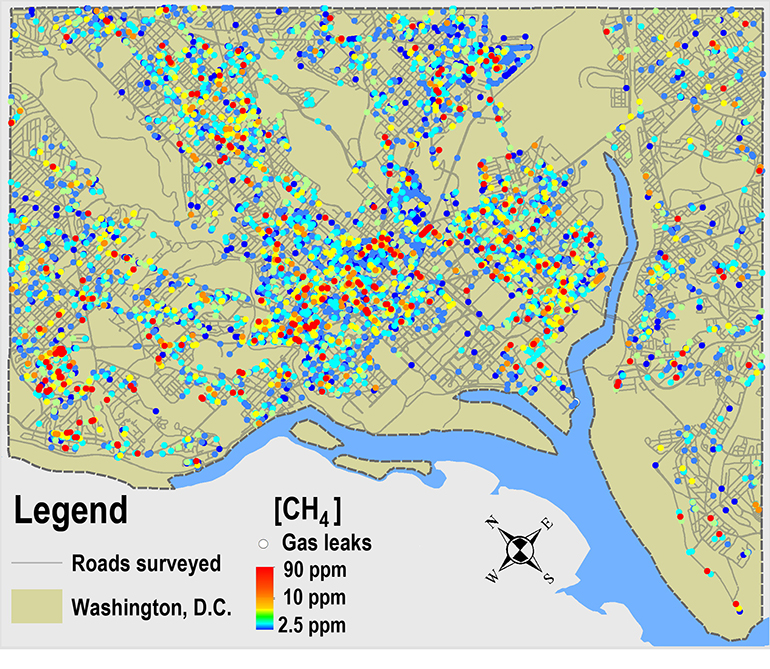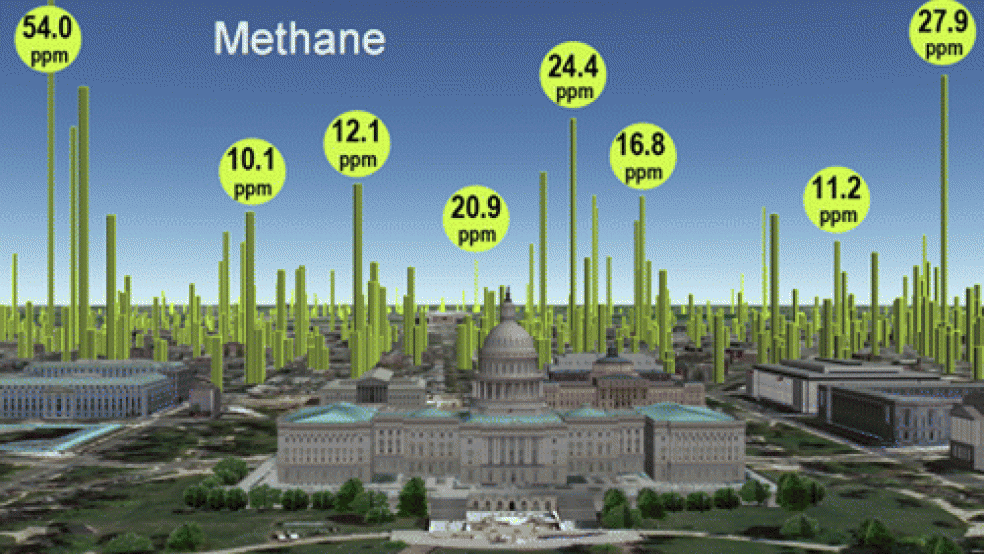A lot of Americans accuse Washington politicians of being full of hot air, but few of us know that they could be walking on it. And it could explode at any time.
A new study by researchers from Duke and Boston University shows there are nearly 6,000 natural gas leaks throughout the city’s sprawling pipe system—including near the White House and Capitol Hill.
The researchers conducted the street-by-street study last January and February, and found that methane levels in some of the leaks were as high as 89 parts per million—about 45 times higher than normal background levels.
They originally flagged 12 dangerous leaks under manholes that could have exploded. Those were immediately reported to Washington Gas in February. However, four months later, when the research team returned, "nine were still emitting dangerous levels of methane."
Washington Gas has not reviewed the study, which was published on Friday in the Environmental Science & Technology journal according to WTOP, an FM radio station. However, Eric Grant, vice president of corporate relations for the company, pointed to the city’s aging infrastructure for the potential leaks and said they are already working on a $28 million project to upgrade and replace the connections between the pipes, according to USA Today.
Methane can cause explosions of all sizes, depending on the amount of gas. It can cause small explosions that can blow off manhole covers. And the gas can cause much larger explosions; in 1937, a gas explosion killed 295 students and teachers at a school in New London, Texas.
Nathan Phillips of Boston University expressed his concern about a potential explosion to The Washington Post. “It’s kind of like an earthquake,” Phillips said. “You don’t stop living your life . . . but somewhere, this is likely to happen at some time. It’s a low-probability, high-impact kind of event.”
The study shows leaks sprinkled virtually everywhere around the city. There’s a concentration of them on Capitol Hill - four spots of which are deemed to be at a dangerous level. The Washington Post has a good map detailing where the leaks are located.

Downtown D.C., which contains the White House, lobbyist-infested K Street, as well as the National Press Building (the D.C. offices of The Fiscal Times and other publications are in the Press Building), is also a ticking time bomb. There are small leaks of up to two times the normal level along K Street, surrounding the White House, and another patch of leaks around Georgetown.
To be sure, many of the leaks that were measured at higher than average levels do not pose a direct health or safety risk, according to the researchers. However, they can have significantly negative effects on the environment. The study said they can contribute to climate change by trapping heat—even more so than carbon dioxide—the lead driver of climate change.
Top Reads From The Fiscal Times:



